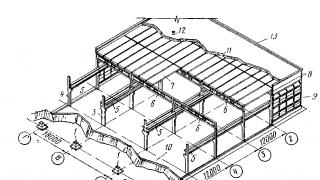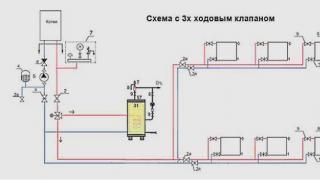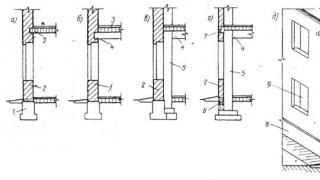Modern construction involves the use of efficient energy-saving materials that provide the tightness of the premises. This can cause such a problem like fogging windows. As a result, condensate is formed. He entails the spread of a mold fungus that creates discomfort.
Such a microclimate can cause a deterioration in the state of health: migraine, asthenia, drowsiness. To solve such a problem, they are resorted to the installation of such a device as a CPV (supply ventilation valve).
Types of supply devices
The modern market of building materials is overflowing with different models of the inlets they are window or wall.
Each modification is applicable taking into account the customer, but both are intended for one purpose - refresh the air indoor. Therefore, as a rule, the devices are equipped with a filter, delaying small contaminants.
There are the following supply valves of ventilation:
- devices equipped with a constant cross section (window);
- devices with section regulation (air intensity level (wall);
- models with forced air supply.
Supply valves mounted on window frames
Valve of supply ventilation for plastic windows is the most common. It has a simple design and provides automatic in the room for 24 hours.

The window device is a gap in the window with dampers. The level of productivity of this device is 3-7 m 3 / h.
The windows with the supply ventilation valve can be plastic, wooden or aluminum. The device is installed at the top of the window.
Conditions under which window models are functioning.
To properly functioning window modifications, they need special conditions:
- The room must be equipped with a natural hood.
- The air temperature on the street must be no higher than +5 degrees.
- The entrance door should be closed hermetically, since there is a danger of air pulling to the entrance.
- Between rooms rooms should circulate air. This means that the doors must be either open, or there should be a slit 2 cm wide, located above the floor.

Many users note that the window supply valves of ventilation are susceptible to freezing. This happens when the device is wrong. With severe frost, the device is not recommended to close if there is a need for its closure, then the outdoor part should be stuck.
Pluses of window devices
- Valve of supply ventilation for plastic windows does not spoil the interior. The device in the room is imperceptible.
- Installation is not difficult and takes about an hour.
- Soundproofing windows and walls.
- Passionate air is directed upwards, which excludes drafts.
- All automatic models are equipped with a hygrometer regulating air humidity.
- The maximum device power indicator is 30 m 2 / h of fresh air, and the minimum is 5 m 2 / h.
- The window unit is inexpensive.
Negative sides
- In the fall and in winter, the flow of cold air falls into the room, which increases the cost of heating.
- The devices function only with a good exhaust.
- It has low bandwidth.
- In the valves there are no filters for cleaning air from dust, which delivers inconvenience.
- In some cases, there is a danger of freezing devices.
Wall models
Support valves of ventilation valves of this species consist of a pipe equipped with sound insulation and thermal insulation, located in the wall. From the outside, the grille with a mosquito grid is mounted on the pipe, and the valve regulating the exhaust air supply is located inside.
Models that are enhanced by hand are controlled by manual or automatic way.
Automated device reacts:
- on polluted air;
- moisture drop;
- pressure jumps.
In essence, the wall device does not differ from the window device and has the same positive and negative parties, except for the following indicators:
- the power level of wall models can reach 60-70 m 2 / h;
- the device is mounted with a filter for rough cleaning;
- in comparison with the window modification, the wall is harder.
The wall instrument provides increased air circulation, allows you to adjust the air supply rate. The design of the valve prevents the penetration of moisture into the room. It has a high noise isolation.
Operating principle
The air flow, passing through it falls into the noise insulating material, where it is cleared of dust. This device is equipped with a labyrinth channel that reduces the speed of air inflows and its subjoyable cleaning. After that, clean air is directed to the damper with the regulation, where it enters the room through holes.
Cons model
With all the advantages of wall models there are negative sides. They require timely care, although when buying you may not say about it. Once per season, the valve needs disassembly and cleaning filters.
In addition, according to user reviews, some species are susceptible to freezing. This happens if the pipe is metallic. But it should be noted that almost all manufacturers produce such a device as the supply ventilation plastic, the valve of which is not subjected to the market and sedimentation of condensate. The lack of similar types of aggregates includes their high cost. It ranges from 2500 to 4000 rubles. But according to specialists, the price is adequate. After all, the valves provide a healthy climate in the room.
Where are the wall models installed?
Installation of the supply valve of a similar type can be carried out in country houses, apartments, factories and factories, in public buildings. This species is often used in medical institutions, schools and kindergartens. The wall model is suitable for low ceilings.

According to experts, the installation of the device is suitable in kindergartens, as it prevents the development of mold fungus, which adversely affects the body of the kids.
Modifications with a forced air supply form
The trim valve with a forced air supply system is different in what possesses:
- electric fan;
- additional cleansing filters;
- device for preheating air.
The aggregate often includes a filter on an angle to purify air from malicious gases.
The devices of this type have a high degree of bandwidth - up to 120 m 2 / h.
Pros and cons of the aggregate
The benefits of the device include the following:
- The valve functions even with faulty ventilation.
- It has an additional air purification system.
- Lowering the content of carbon dioxide and dust particles.
- Normalizes indoor humidity.
Cons devices:
- in many types of these devices, there is no air preheat function, which is uncomfortable for use in winter;
- such devices are expensive.
- The instruments are installed in the rooms where there are windows.
- Ventilation supply valves are mounted in all rooms of the apartment.
- The level of incoming and removed air should be the same.
- In the kitchen, where there is a gas stove, an adjustable supply device is installed.
- It is advised to install valves at an altitude of 2 meters and more from the floor near window openings.
- Devices are not advised to mount in the toilet and bath, as there is a high level of humidity. In winter, an increased condensate may form that it will cause frosting devices. This violates the functioning of the ventilation.
- To avoid freezing units, you should install heated devices.
- The supply valves are mounted in rooms with windows whose infiltration coefficient is less than 0.3 m 2 / h.
- The air exchange rate per person should be 30 m 2 / h.
- If the walls and windows overlook the noisy street, then additional valves are installed, overwhelming noise.
- The devices are mounted near the radiators so that the cold air is heated in winter
- When buying devices, you should pay attention to the presence of a filtration system. Otherwise, in areas with increased pollution, you risk the fact that a large amount of dust will penetrate into your room.
Installation features
By choosing, pay attention to the pluses and disadvantages of each device. When choosing a wall model of an urgent solution, it is not required, and when the window type is selected, it is necessary to purchase faster, as the cold and the windows are coming soon they will be closed. In addition, this species is not equipped with a filtering system, and the cost of the window type with additional components is quite high. In a word, the wall ventilation valve has more positive sides. In addition, it can be mounted independently.

Before starting the installation, determine where the valve will stand. As a rule, choose an invisible place, but often, depending on the taste of the room owner, and other sections of the wall.
The device must be located in the wall that carries the support function. This is required to organize air intake from the street.
What instruments will be required?
To independently install the device, you will need:
- Perforator with a drill-brown or crown with attacks from defeating the required diameter.
- A set of drills intended for concrete and bricks.
- Screwdriver curly shape.
Progress
First of all, a hole is closed in the wall, the diameter of which is taken with a margin. So the pipe will be free and will take the right position. The length of the valve is selected taking into account the wall thickness indicator. The length of the pipe is 0.4-1 m. After installation, all the slots are closed by construction foam. To prevent the penetration of moisture from the outside, the chipper is installed from the rain.
When installing, important points should be taken into account:
- before proceeding with drilling, make sure that there is no electrical wiring in the wall;
- when working, use such protection products such as gloves, glasses, etc.;
- if you cannot install, whether there is a wiring wall, seek help to a professional.
Manufacturers and cost
When buying a device, pay attention to the country-manufacturer.
The original inlet channel is the model of Kiv-125 from the Finnish company Flakt Woods. The cost of the product is 4800 rubles. Chinese copy of KIV-125 in quality is inferior to the Finnish product.
The popularity of the flow instrument has increased so much that some manufacturers, for example, the domestic company "First Passage", began to produce such modifications. From those you can note the models of the CFC-125, MPK-125, CPV-125, VK-8.
The CPV-125 device is also an analogue of the KIV-125 design. The cost of the domestic device is one and a half times lower than the original model. It is 3100 rubles. It should be noted that this model is no inferior to the original Finnish valve.
From domestic devices should also be noted "Domvet" - the supply valve of the supply ventilation, the price of which is 1,500 rubles.
Also on the market is a modification called Kiv Quadro from the Italian company Vortice. The cost of the device is about the same as Finnish. It has identical characteristics. The difference consists in the shape of the gloves. Italian ventilation valves square, and Finnish - round.

Currently, the western market is replete with devices of this type. On the domestic market of building materials, window ventilation valves are already known from the French company Aereco, Belgian manufacturers Renson and Titon, the German brand Siegenia.



